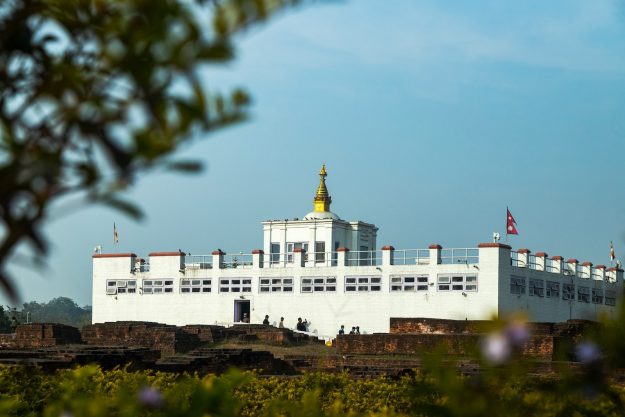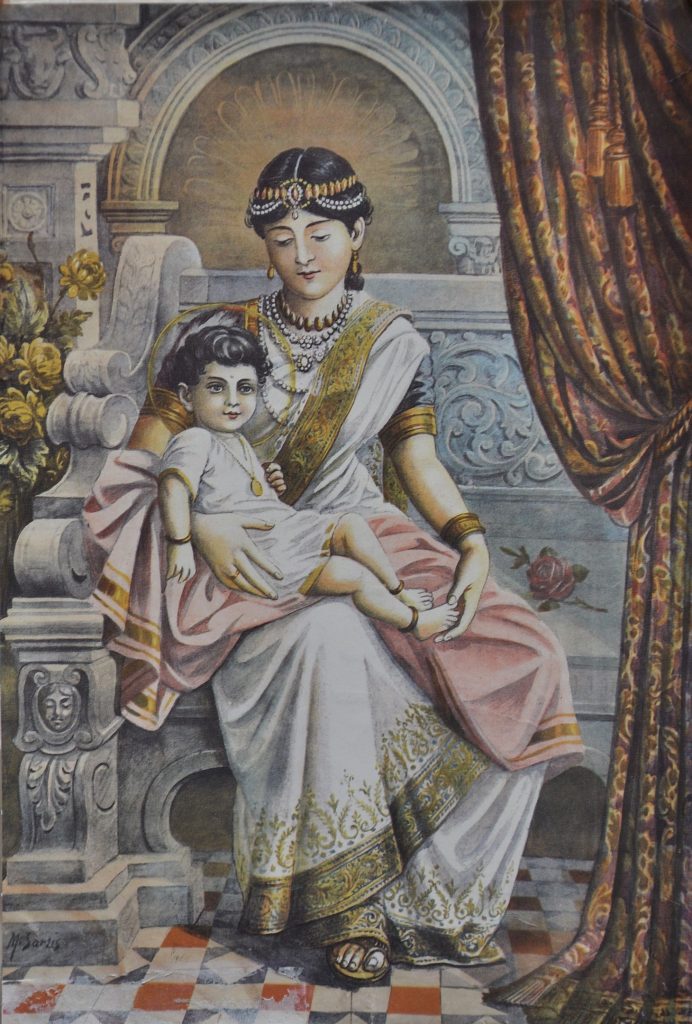Wendy Garling, a Buddhist practitioner, author, and researcher, is dedicated to uncovering long-forgotten stories of women in Buddhism and rediscovering historical sites. And now, she’s taking others along.
This November, Garling is partnering with Katherine Demsky, an anthropologist who has lived and worked in Nepal for a decade, to offer “In the Footsteps of Gautami and the First Buddhist Women.” They say the pilgrimage is “historic”—the first to recreate the journey that Mahaprajapati Gautami, the Buddha’s adoptive mother who led 500 women to ask the Buddha for permission to ordain as nuns, took more than 2,500 years ago.
Monastics from Dongyu Gatsal Ling Nunnery, including founder Jetsunma Tenzin Palmo, are among the list of attendees. The pilgrimage will be capped at a maximum of around thirty people.
We recently spoke with Garling about her work reconnecting with Buddhist sites from ancient and historic Buddhist texts and the importance of honoring the Buddha’s legacy in Nepal.
Please start by telling me what you’ve found in your research about sites around Lumbini in Nepal. What I realized in doing my research is the Buddha spent more than a third, perhaps up to half, of his life in Nepal. And yet, when we think about the Buddha, we focus almost entirely on India. I’ve come to realize that creates an imbalance that leaves out a lot of stories. It’s become “oh, by the way, he was born in Lumbini …” We’re missing a whole lot about the origins of Buddhism and the Buddha’s life by omitting Nepal. And, then, as we look more deeply into it, it’s also an essential part of the early Buddhist women’s stories. And that’s what brought me to my latest area of research, which is looking at Nepal.
A point to make here, too, is when I talk about Nepal and India, in the time of the Buddha, it was one region, now referred to as the Indo-Gangetic Plain. So we’ve created these artificial boundaries of India and Nepal, when in fact it was one region. His life travels flowed back and forth between what we call India and Nepal. I like to think of Nepal as Buddhism’s motherland and India as its fatherland.
When I was in Nepal last October, I found an excellent guide who knew a lot of the nooks and crannies of the Lumbini area. He was from there, and was also familiar with the remembered stories, which is amazing—it’s been 2,500 years. So I went on a quick tour to these early Buddhist sites. I was really surprised, for example, to find the town of Devadaha still by that name, which is the hometown of the Buddha’s mothers and matrilineal forebearers—his birth mother, Queen Maya, and her sister, the Buddha’s adoptive mother, Mahaprajapati Gautami. Devadaha is where their homestead was, and it’s still called Devadaha. When you approach the town, there’s a big, welcoming archway, joyfully painted in colors, that read “Welcome to the birthplace of the Buddha’s mother.” The region is mostly Hindu now, and the remembered history is a wonderful blending of the two traditions.
I also went to the site where the two mothers grew up. There’s a little mud temple there dedicated to Maya as a goddess figure; it’s tiny but still actively worshipped by local women, though I didn’t see anyone when I was there. And it’s in a parklike setting that is being preserved by the Nepali government.
From there, I visited several other sites, including the Rohini River, which is very important in Buddhist Sanskrit and Pali literature. There are many stories that reference the Rohini River and the Buddha teaching nearby. It’s the dividing boundary between his matrilineal family, the Koliyans, and his father’s people, the Shakyans. Although in the bigger picture, they’re all Shakyans, just different clans. I found more sites on this tour as well, including stupas marking the tombs of the Buddha’s parents, Queen Maya and King Suddhodana.
Locating these sites was over-the-top exciting for me, not just on behalf of the lost women’s history, but because they shed light on the skewed nature of Buddhist history that has undervalued them. And that’s why I created this pilgrimage that I am coleading in November.

I recently traveled to Lumbini to write a story about Venerable Metteyya that will be in the next magazine issue, and I visited the Maya Devi Temple. It’s beautiful and wonderful; I’ve also heard from friends who have visited the other main pilgrimage sites in India that Lumbini seems a bit lacking in something. Lumbini was rediscovered by Westerners at the turn of the 20th century, but the locals never forgot about it. Why have some of these important places disappeared? It’s hard to say. I think they’re remembered by some people and forgotten by others. The patriarchal side of the story came to the West. It’s a question of who is telling the story; the storytellers shape the story. Until recently, Buddhist women have not deeply examined the stories themselves, which is what I’ve tried to do in my books.
The stories of the Buddha’s ancestors go back many, many generations in Nepal. They tell us the Shakyan people originally came as nomads from the Benares region of India. None of this has been noted in the West. Why is the Nepali government remembering its Buddhist legacy? I think it’s because Nepal values its history and culture deeply. It’s also at the crossroads of where Buddhism left India, and then flowed into other cultures such as Tibet and China. And Nepal is a very poor country, and I think they also see the economic opportunity in promoting Buddhist tourism.
I’m more interested in raising awareness and bringing people to the sacred areas, so I’ll mention another site in Nepal that we’ll visit on the pilgrimage. When the Buddha was passing away, Ananda asked him what should be done with his remains. And the Buddha stipulated that his cremated ashes should be divided equally among eight locations. They were all in India except for one in Nepal that is called Ramagrama, which is not well-visited and way off the beaten path of the typical India pilgrimage.
However, 300 years after the Buddha’s death, King Ashoka decided to spread the Buddha’s remains further, so he had seven of the eight stupas opened up and the Buddha’s ashes were redistributed among (some say) 84,000 locations. I think he had good intentions, but that was not the Buddha’s wishes. And Ramagrama is the only stupa that has never been disturbed; pilgrims can deeply connect with the fact that his remains are there and that’s what the Buddha wanted. Legend has it that Ashoka tried to have the Ramagrama stupa opened up, but there was a ferocious backlash from the nagas (snake spirits). So Ashoka put up a pillar instead (that was his thing), but he did not disturb the stupa. I experience this as the rise of the sacred mother bear energy, the protective female saying, “No way are you going to disturb these remains.” So this also fits into our narrative of Nepal being the motherland.
I read that this first pilgrimage is open to everyone even though it may seem more geared to women. Can you speak more about that aspect? Yes, the pilgrimage is open to all genders. I also want to say, when the Buddha laid out the blueprint for his ministry right after his enlightenment, he made it clear that his intention was to bring the dharma to all people, men and women, lay and monastic. That is the fourfold sangha that we refer to today. In today’s terms, to me, that includes all genders. All beings have Buddha potential; anyone who feels called to this pilgrimage is welcome.
I’m also thrilled to say we’re going to be having monastics joining us, including Jetsunma Tenzin Palmo and nuns from her nunnery, Dongyu Gatsal Ling. So we will have the monastic community very well represented, with a very wise and wonderful teacher joining us.
Right now, we’re still taking registrations and welcoming anyone who feels drawn to this pilgrimage. I think that the heart connection is the first connection to a pilgrimage. It’s kind of hard to explain; that’s what pilgrimage has been for me.
We’re calling it “In the Footsteps of Gautami and the First Buddhist Women,” and that’s intentional. When the Buddha returned home for the first time after twelve years (the Pali tradition says six years), women were not allowed to attend his teachings because of prohibitions within the Shakyan patriarchy, not the Buddha. So the women went to Mahaprajapati Gautami and asked for her leadership since she was the queen. Mahaprajapati first received permission from her husband, the king, then all the women approached her son, the Buddha, to override the patriarchal rule. All this took place in a site called the Nigrodha Grove, which the Buddha’s father had built to accommodate the Buddha and his entourage of monks on his first trip home. It was and still is a beautiful park where the monastics encamped and the Buddha taught large gatherings of the Shakyan people. Today, several stupas mark the sacred events that took place there.
And it’s at this site five or six years later where the women, who had by that point been devout lay practitioners, first asked for ordination. I go into this story in depth in my books. Venerable Analayo writes deeply on this subject as well.
The Buddha didn’t feel the timing was right, and his response was, in so many words, “not yet.” Soon he left the Nepal region with his cohort of monks and returned to India. That’s when the women said: “We’re coming too.” They say Mahaprajapati led 500 women from the Nigrodha Grove to Vaishali, where they requested and eventually received permission to ordain from the Buddha.
This site in Vaishali is also where the 500 women, plus Mahaprajapati Gautami, took their final parinirvana; a very significant story in the Apadana section of the Pali Canon. It’s a fantastic story, that they all decided to enter nirvana together. So we will all travel together from Nepal to Vaishali to visit this site, and that’s where we will end the pilgrimage.

♦
“In the Footsteps of Gautami and the First Buddhist Women” will take place from November 9–17, 2023. More information is available here or by emailing G500pilgrimage@gmail.com.
Tricycle also presents tours to Buddhist countries and pilgrimage sites. You can learn more here.
Read more from Wendy Garling in the Tricycle archives:
- Three Forgotten Stories About the Buddha’s Mother
- A New Path into the Past (a review of Garling’s Stars at Dawn by Lauren Krauze)
Thank you for subscribing to Tricycle! As a nonprofit, we depend on readers like you to keep Buddhist teachings and practices widely available.
